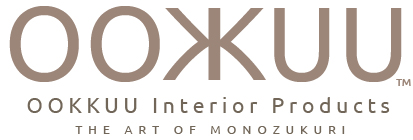
There are many options when it comes to the materials that make up your tableware. Plastic, while affordable, durable, and lightweight, tends to look cheap on the dinner table. Glass is largely dependable, though it can often be heavy and prone to breaking when dropped. Ceramic is a popular choice because it resists breakage better than glass, though chipping can be an issue.
And where does paper fit into the thoughts about tableware? In today’s modern times, paper is seen as a disposable material. Paper plates, napkins, sheets of paper to write on: these are objects we tend to use once and throw away.


However, paper is a natural resource that should not be underestimated. Unique to Japan is washi, which is a style of paper made from a variety of trees and sometimes even bamboo, rice, or wheat. Washi is tougher than regular wood pulp paper, and it was used to create long-lasting item. Japan in particular innovated several uses for paper, from shoji doors, paper lanterns, even umbrellas. Until the 20th century, washi was amongst the most popular materials to construct everyday items.
Washi
What makes washi unique in its durability is not simply its materials, but also its manual processing. The materials are treated in ice-cold water in long periods of time in order to inhibit bacteria growth and encourage fibers to contract, producing a crisp and strong feel.
Today, several styles of washi are still being produced, each with its own unique properties and uses. Washi artisans are tasked with preserving intricate processes that produce paper with distinctive nuances, ranging from its shades of natural color, its weight, its sheen, and its texture.




By fashioning the strong, yet flexible washi into desired shapes and then applying layers of natural urushi lacquer, Japanese craftsmen could create long-lasting kitchenware that was lightweight and waterproof. While requiring significant labor and resource, washi lacquerware created by the traditional lacquering technique “dry lacquer formation” possesses a unique beauty and strength.


KOYORI washi lacquerware
The KOYORI series of paper kitchenware is created with another traditional paper lacquering method called “Nagato”. The craftsmen carefully weave koyori (fine washi strings) into desired shape before applying lavish amount and layers of urushi lacquer. The soft and natural textures can be felt through the woven layers of paper, creating a warm feel you won’t find on other types of tableware.
The designer focused on creating paper kitchenware that is just as durable as plastic, refining the lacquering process to make the pieces truly water-resistant. The result of the streamlined design and exquisite craftsmanship is kitchenware that feels alive, extremely lightweight and gentle to the sense of touch.




The maintenance and care of the Koyori Series is the same as that for fine natural lacquerware. Do not soak them in water. No dishwasher or dryer. Clean gently with a well-wrung wet cloth and then wipe dry with a soft towel.
From your OOKKUU team
